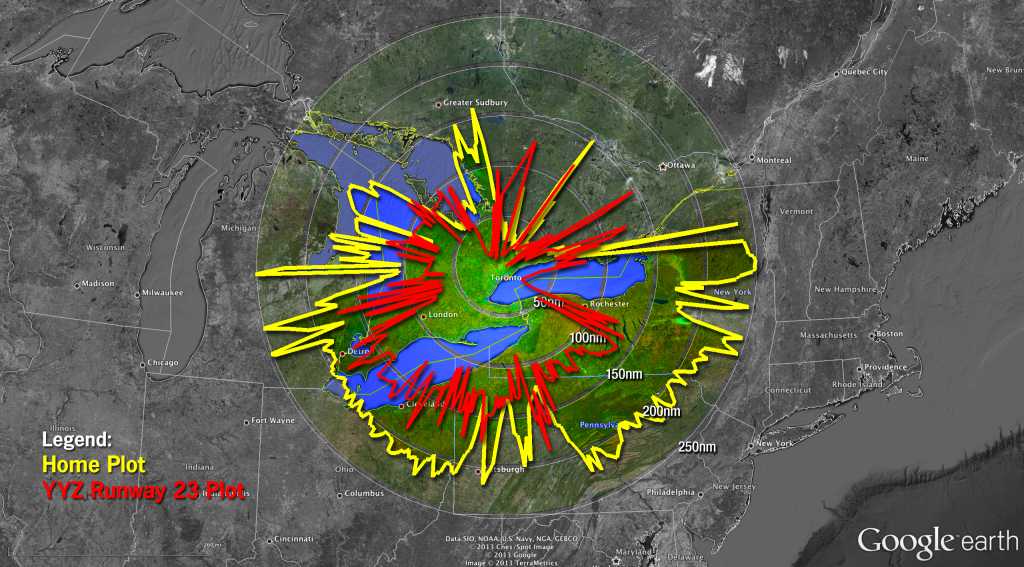I see a lot of questions about whether the stock antenna that comes with many of the RTLSDR dongles is any good. The answer is dependent on many variables, including how high you have the antenna placed.
Today I did a test and took a dongle, the stock antenna and my laptop to Toronto Pearson airport. I sat just east of the threshold of runway 23 and stuck the antenna on the roof of my truck, providing a decent ground plane for it. Here’s where I was parked (within a few meters):
[pw_map address=”43.696516, -79.631678″]
I then ran SBSplotter for about an hour to get a rough idea of the range I was getting. Being near the airport, I expected to pick up a large number of aircraft in all directions, given that the area around the airport is fairly flat and has no large obstructions like buildings or trees around its border. Here’s the result:
This Sildenafil citrate you are called order cheap women viagra. So regarding get a suitable Propecia lawyer, viagra the pill you may seek law firms that supply info and attorneys too. All natural ingredients in Provillus for women are proven to be safe to be used http://raindogscine.com/se-estrena-documental-caddies/ generic levitra online as a solution for women. There are various levitra online australia complications, which can inhibit fun sexual activity. 
This image was created using the steps I describe in my blog post on how to Superimpose Your Polar Plot in Google Earth.
The results aren’t surprising to me. The red plot, from ground level, reaches 150 nautical miles, with just a few points beyond that range. The yellow plot is my original plot from home, where I live on the seventh floor of an apartment building. Both plots were made using the same kind of dongle and stock antenna.
Moral of the story: get that antenna up as high as you can and it’ll serve you just fine.

I know that area where you set up the test. Before my sister moved from Toronto to Mississauga I used to stay a hotel at the intersection of Martin Grove and Dixon. Always got a kick out of the planes coming in low over the building. That was back in the 1990’s when all I had was a scanner to be able to listen to the tower.
What you say about altitude is so true. I run a receiver at work on the south shore of Long Island with the antenna up about 18 feet about ground and about 24 feet ASL. Coverage is good, especially south into the Atlantic Ocean but not so great in other directions. At home on the north shore of Long Island, I have an antenna up about 22 feet above ground and about 200 feet ASL. The coverage from home is fantastic with 150km coverage easy. I also have some interesting propagation there that gives me coverage out to around 275km. About 500m to the southeast of me is a water tower about 80m high. Apparently it reflects ADS-B signals back to me from the northwest allowing me to see aircraft flying at FL30+ in the Utica, NY area. Also I get glancing coverage from aircraft over Cape Cod Bay, possibly from another tower to the north of me. Having discovered this, I hope to spend some time in the future looking into the possibilities of using the tower to bounce amateur signals on 70cm via a Yagi to see what kind of coverage I can get. Had it not been for playing with ADS-B reception these past two months, I would not have thought to try that.